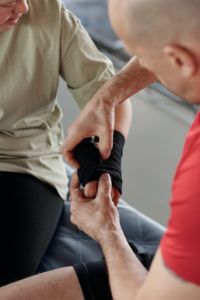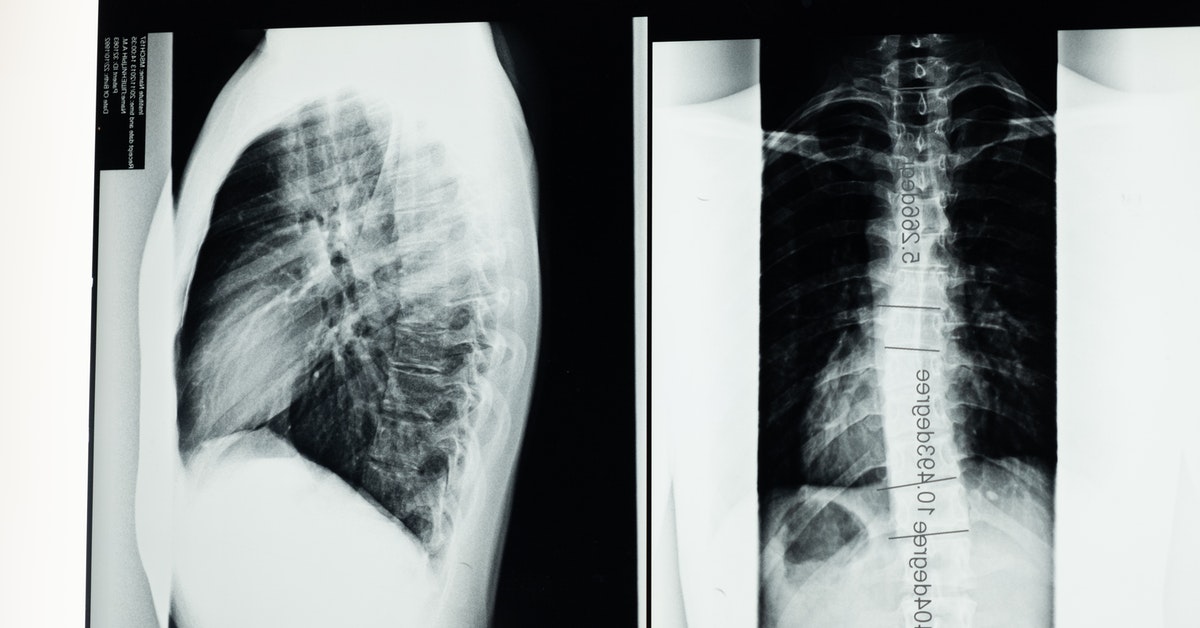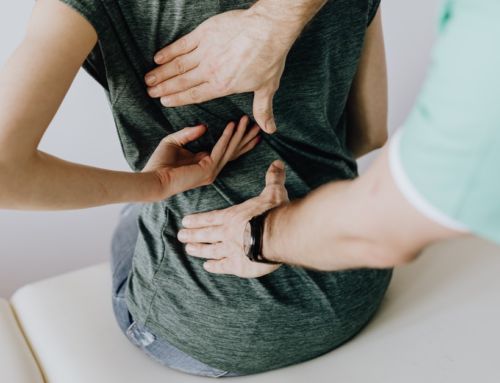Musculoskeletal problems like joint pain and osteoarthritis affect half of all people over the age of 18 in the United States. Unfortunately, funding for research into musculoskeletal conditions has waned even as yearly diagnoses have increased. To draw attention to this problem, Bone and Joint Health Action Week was established. This awareness campaign runs from October 12th through the 18th, and each day focuses on a musculoskeletal condition, including pediatric joint and bone problems, arthritis, and spinal conditions.
At our chiropractic office in Grand Rapids, we see people of all ages struggling with joint pain, back injuries, and congenital conditions. Here are four things we want people to know about bone and joint health:

1. Prevention is Possible
Bone and joint conditions are the most common cause of long-term pain and disability worldwide. Many of the injuries and conditions that cause chronic pain can be prevented. Back and joint injuries often occur from overuse or improper posture. You’ve probably heard that you should “lift with your knees,” but this familiar advice is often misunderstood. It’s a common misperception that careful lifting only applies to heavy or bulky objects. The truth is that even lifting a light object improperly can strain or injure your back.
Acute injuries happen when you suddenly throw your back out or from a traumatic accident like a fall or car crash. Not all acute injuries can be prevented, but many can. Here’s how:
- Always wear a seat belt.
- Use the correct safety gear when doing strenuous tasks at work or home.
- Always take a moment to evaluate your posture before you lift something– don’t ever twist or lift from an angle.
- Keep your body in a neutral, upright position while doing yard work or shoveling snow.
Repetitive use injuries are another common cause of back and joint pain. These injuries occur over a longer period of time as wear and tear build-up. Tennis elbow, carpal tunnel syndrome, and chronic upper back pain from computer work are examples. Often, good posture and ergonomics can prevent repetitive use injuries. Hunching over a desk can cause small tears in the muscles of the upper back and neck. These tears lead to scar tissue which can cause stiffness and trigger points. Leaning your head forward puts strain on your spine and leads to chronic pain. Here are some tips on how to prevent and mitigate overuse injuries:
- Set up an ergonomic workstation.
- Take frequent breaks when doing an activity that works one part of your body.
- Don’t sit or stand for more than an hour without moving around.
- Use braces, gloves, or other supportive measures while doing a repetitive activity.
- If you begin to feel pain, rest the affected area and ask your provider about home care.

2. Early Treatment is Key
While prevention should always be the goal, some injuries are inevitable. If your job requires you to use one arm to operate a piece of machinery all day, you will most likely suffer from some kind of joint pain as a result. Overuse injuries like this don’t have to become severely painful. Early treatment can help. The same is true of acute and traumatic injuries. Therapies are most effective when used early, and prompt treatment can prevent acute pain from becoming chronic.
When you feel joint or back pain, the first step you should take is to rest the area and call your provider for advice on home care. Sometimes a few days of rest, cold and heat therapy, and stretches are sufficient. When the pain lasts longer or if it is very severe, you should seek professional treatment. Chiropractors are equipped to evaluate and diagnose your injury using X-rays and other tools. After you’ve been diagnosed, your chiropractor will draw up a treatment plan. It’s important to follow this treatment plan to completion. Patients who end treatment early are more likely to experience recurring and chronic pain.

3. Not All Treatments are Created Equal
For many years doctors in the U.S prescribed opiates to relieve back pain. We now know that these drugs are extremely dangerous. They are also ineffective for back pain and only act as a bandaid. Muscle relaxants have also been frequently prescribed for back pain and are sometimes prescribed for long-term use, despite FDA recommendations to the contrary. Muscle relaxants are only approved as short-term (a few weeks) solutions for back pain. They have also proven ineffective at resolving back pain.
Several peer-reviewed studies have shown that back surgeries are often not successful in resolving a patient’s pain. One study stated that only 30% of back surgeries are successful. This success rate varies depending on the type of surgery and the condition being treated. Sometimes surgery is necessary and helpful, but it should never be a first-line solution. Unfortunately, many patients take ineffective medications for years and then reach a point where surgery is necessary, only to find themselves still needing medication after surgery.
There are safe and effective treatments for back and joint pain, and when used early on, they can often prevent the need for surgery and reduce the patient’s need for painkillers. Cold laser therapy, spinal decompression therapy, and acoustic compression are FDA-approved treatments that reduce inflammation and encourage healing. Best of all, they are noninvasive and carry no risk of addiction.

4. Children are at Risk Too
Adults are not the only population at risk for joint pain and bone problems. Some conditions emerge during childhood and can cause lifelong problems if not treated promptly. Scoliosis is one of the most common musculoskeletal conditions affecting children. Scoliosis causes part of the spine to curve towards the side of the body. Your chiropractor can screen your child for scoliosis and recommend treatment such as braces to prevent the condition from getting worse. Concerns involving joint pain or swelling or chronic musculoskeletal pain in children should be evaluated immediately. Many conditions can cause these symptoms, and it’s important to pinpoint the cause and begin treatment as soon as possible.
Many pediatric bone and joint problems can be prevented by feeding children a healthy diet rich in calcium, vitamin K and good fats like Omega 3’s. Exercise, a healthy weight, and plenty of Vitamin D creating sunshine are also important for children’s bone health.
Treatment for Joint and Back Pain in Grand Rapids, Michigan
At Burkhart Chiropractic, we treat adults and children who are struggling with musculoskeletal pain. We believe in providing treatments that fix the underlying problem. We also educate our patients on how to prevent common injuries and conditions. Schedule a consultation today to discuss your joint and bone health concerns.





